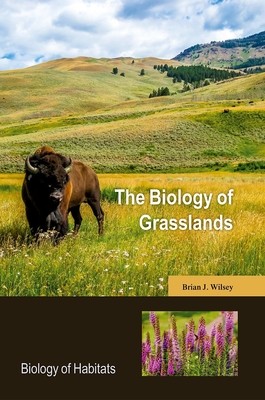
- We will send in 10–14 business days.
- Author: Brian J Wilsey
- Publisher: Academic
- ISBN-10: 019874451X
- ISBN-13: 9780198744511
- Format: 16 x 23.6 x 1.5 cm, kieti viršeliai
- Language: English
- SAVE -10% with code: EXTRA
Reviews
Description
This accessible text provides a concise but comprehensive introduction to the biology of global grasslands. Grasslands are vast in their extent, with native and non-native grasslands now covering approximately 5% of the global terrestrial environment. They are also of vital importance to humans, providing essential ecosystem services and some of the most important areas for the production of food and fibre worldwide. It has been estimated that 6% of calories consumed by humans originate from grasses, and most grain consumed is produced in areas that were formerly grasslands or wetlands. Grasslands are also important because they are used to raise forage for livestock, represent a source of biofuels, sequester vast amounts of carbon, provide urban green-space, and hold vast amounts of biodiversity. Intact grasslands contain an incredibly fascinating set of plants, animals, and microbes that have interested several generations of biologists, generating pivotal studies to important theoretical questions in ecology. As with other titles in the Biology of Habitats Series, the emphasis is on the organisms that dominate this environment although restoration, conservation, and experimental aspects are also considered.
EXTRA 10 % discount with code: EXTRA
The promotion ends in 21d.21:35:20
The discount code is valid when purchasing from 10 €. Discounts do not stack.
- Author: Brian J Wilsey
- Publisher: Academic
- ISBN-10: 019874451X
- ISBN-13: 9780198744511
- Format: 16 x 23.6 x 1.5 cm, kieti viršeliai
- Language: English English
This accessible text provides a concise but comprehensive introduction to the biology of global grasslands. Grasslands are vast in their extent, with native and non-native grasslands now covering approximately 5% of the global terrestrial environment. They are also of vital importance to humans, providing essential ecosystem services and some of the most important areas for the production of food and fibre worldwide. It has been estimated that 6% of calories consumed by humans originate from grasses, and most grain consumed is produced in areas that were formerly grasslands or wetlands. Grasslands are also important because they are used to raise forage for livestock, represent a source of biofuels, sequester vast amounts of carbon, provide urban green-space, and hold vast amounts of biodiversity. Intact grasslands contain an incredibly fascinating set of plants, animals, and microbes that have interested several generations of biologists, generating pivotal studies to important theoretical questions in ecology. As with other titles in the Biology of Habitats Series, the emphasis is on the organisms that dominate this environment although restoration, conservation, and experimental aspects are also considered.


Reviews